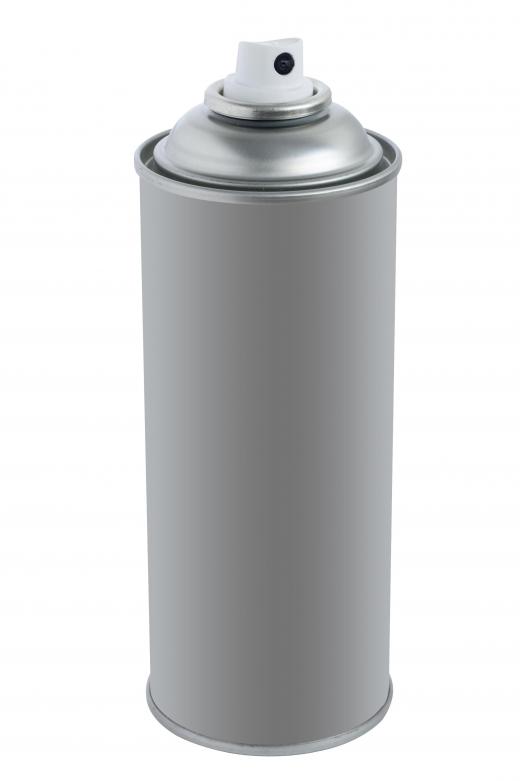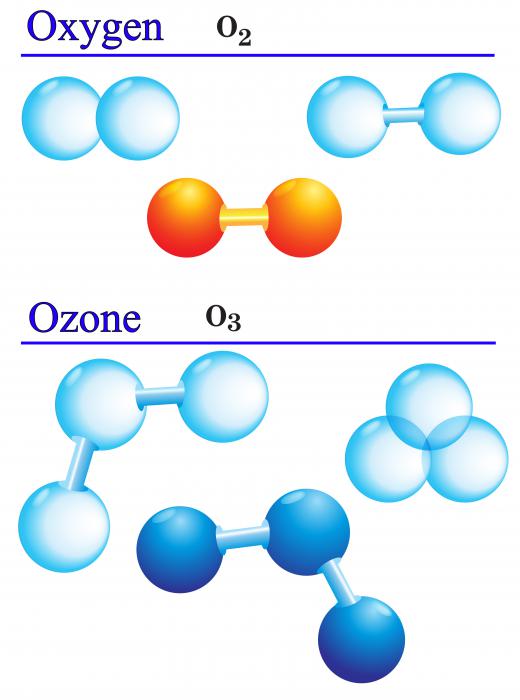What are CFCs?
Chlorofluorocarbons, of CFCs, are chemical compounds developed as an alternative to more dangerous chemicals for a variety of applications. They were developed in the 1930s for use mainly in refrigeration and as a substance for propellants in products such as aerosol cans. However, while they pose less of a direct threat to individuals, they can provide an indirect threat to the global environment.
CFCs contain several organic compounds and formulas may vary. However, the most common organic compounds used are carbon, fluorine, chlorine and hydrogen. These compounds are not toxic and not flammable, which made them ideally suited for use as propellants and other home uses. One of the trade names of CFCs is freon, which is used as a coolant not only for refrigerators but for air conditioning units, both in vehicles and in homes.

CFCs, after their creation in the 1930s, quickly became the product of choice for many manufacturers. However, as CFCs increased their market presence, many did not realize how harmful they were on certain parts of the environment. Therefore, the unabated use of the chemicals over the years started to take their toll, especially on the ozone layer, a layer of the Earth's atmosphere that helps deflect ultraviolet (UV) rays. Further, CFCs also contribute to global warming. Due to these issues, some countries, such as the United States, have largely banned the use of CFCs.

The ozone layer is a very vulnerable, yet vital part of the Earth's protection against the harmful UV rays from the sun. Many people refer to a "hole" in the ozone that has developed over parts of the southern hemisphere, most notably near and over Antarctica. Those who live at the southern tip of South America, southern Australia and similar latitudes have noticed an increase in the harmful effects of stronger UV rays, including more cases of skin cancer and eyesight issues.

The reason why CFCs are so harmful to the ozone layer is due to the presence of chlorine that is part of the compound. The suns rays work to break down CFCs that are released into the atmosphere and the chlorine, which is normally not present in the atmosphere in very high concentrations, begins to break down the ozone layer. CFCs have a life in the atmosphere of anywhere from 20 to 100 years, meaning the harmful effects can be felt for decades.
The harmful element that works regarding global warming is carbon. Carbon helps keep heat in the atmosphere, refusing to allow it to be reflected back into space. As the carbon is broken in CFCs, the effects of global warming are intensified.
AS FEATURED ON:
AS FEATURED ON:

















Discussion Comments
Great article today at Physorg about a study claiming CFC's are primarily responsible for any GW and not carbon dioxide, which this article seems to take for granted.
This is a great article. It really got the point across. It could've listed some more examples of house hold uses for CFCs. And it would've been helpful if it mentioned the cycle of how CFC's hurt the ozone by releasing chlorine molecule when subjected to sunlight.
One of the problems, looking back at CFCs and ozone, is that even then people were gathering a lot of evidence of the risk of climate change. However, even though people like Rachel Carson were pointing out the damages to the larger environment as well as to animals more directly, people refused to take notice; this sort of selective hearing has just gotten worse and worse in some segments of society.
These days most aerosol products are not really sources of CFCs, though they still have their own problems.
In addition to the problems they caused for the climate, many CFCs also had disastrous effects on the animals living in the places where they were most often used; the increase of these chemicals was the cause. However, this was at least more easily fixed after the limiting of CFC use than some other effects of CFCs, such as ozone depletion.
Post your comments